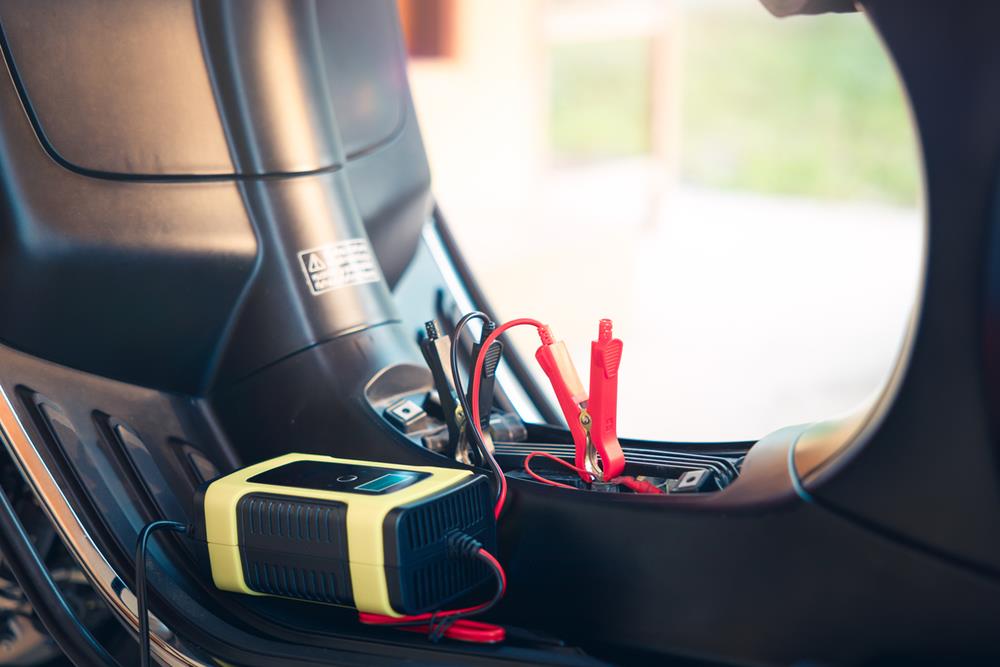Battery-Powered Roadside Repair Kit: What Belongs in Every Trunk

Drivers everywhere benefit from weather-resistant, high-grade tools that turn breakdowns into quick fixes. Prioritize a lithium jump starter with integrated lighting, a portable tire inflator, and a sturdy multi-tool in a waterproof case. If you ride a motorcycle, add vice grips and a tubeless plug kit. Favor brands with solid warranties and corrosion-resistant materials—the right gear keeps you moving when conditions get rough, or when you're taking long trips on the expansive highways of Texas.
Essential Roadside Tools
https://www.youtube.com/watch?v=daFtf0mxVW0
Think in categories—power, tires, visibility, and quick fixes—so you don't overpack. Start with a lithium jump starter rated for your engine size (peak amps are helpful, but look for reliable cold-cranking performance, reverse-polarity protection, and spark-proof clamps).
A cordless tire inflator with an accurate digital gauge and auto shutoff lets you set a target PSI and focus on safety. Add a headlamp (keeps both hands free), a reflective triangle, a high-visibility vest, and a compact multi-tool that actually bites—pliers, wire cutters, flat/Phillips bits, and a medium blade you can control.
A small adjustable wrench, a pencil tire gauge, duct tape, zip ties, electrical tape, and a mini fuse kit are tiny weight for big wins. Round it out with a compact OBD-II scanner; even if you're not a pro, you can clear a nuisance code after tightening a gas cap or at least know if you should limp to a shop or call for help.
Battery-Powered All-Stars You'll Actually Use
View this post on Instagram
A pocket multimeter or test light identifies blown fuses and broken circuits, but most roadside electrical fixes are simple: tighten battery terminals, clean corrosion with a small wire brush, and replace a burnt fuse with the same rating. Your OBD-II scanner can read common codes (misfire, evap leak, sensor glitch) and clear them after a fix. Keep spare fuses, a few butt connectors, and a ratcheting crimper—a solid crimp is safer than a twisted wire wrapped in tape. If you rely on your phone for navigation, a high-output power bank (20,000 mAh +) prevents "stranded with a dead phone" syndrome while the jump pack stays reserved for the car. Bikes demand efficiency. Pack vice grips (can mimic a lever), combination tire irons/axle wrenches sized for your bike, compact driver bits, and spare master-link clips if your chain uses them. For tubeless tires, carry a mushroom plug kit; for tubes, bring patches, spoons, and a set of CO₂ cartridges or a USB-rechargeable pump. A pocket multimeter helps track down the all-too-common intermittent electrical issue. Store it all in a tool roll or small MOLLE pouch to prevent bounces from scattering parts, and practice a plug at home so it's second nature when you're roadside. Moisture and dust ruin tools. Choose IP-rated toolboxes with gasketed lids, compression latches, and stainless hardware. Truck owners can step up to powder-coated bed boxes with automotive-style seals; sedan owners can use low-profile cases that slide under a cargo floor. Inside, foam cutouts or labeled compartments speed retrieval in the dark. Tuck a few silica-gel packets in the case, and add a laminated checklist with kit contents, emergency contacts, insurance info, and your preferred shop's number. Mount tie-down points or Velcro to keep the box from becoming a projectile during hard braking. A handful of plastic trim levers prevents scratched panels. Keep push-clip assortments for fender liners and under-trays—those little fasteners love to vanish. A magnetic telescoping pickup saves time in gravel or grass. If a lug nut rounds off, a lug-nut extractor socket can rescue the situation; after a spare-tire install, snug lugs in a star pattern and recheck torque once you're off the shoulder. A roll of painter's tape protects paint while you wedge or pry, and a short panel wedge helps pop stubborn clips without cracking them. Rules vary city to city and state to state, so focus on habits that always help: pull as far from traffic as you safely can, set a triangle behind the vehicle, wear a high-vis vest, face oncoming traffic while you work, and keep your phone in a pocket. Chock a wheel before lifting the car, and never crawl under a vehicle supported only by a jack. Summer heat brings dehydration risk, so keep a stainless water bottle in the trunk; winter demands gloves, a blanket, and a compact scraper. "Lifetime" often means limited lifetime—hand tools usually enjoy strong coverage, but electronics and batteries are commonly excluded or pro-rated. Register tools you depend on, keep receipts, and note claim procedures. For battery health, avoid cooking packs in a trunk during heat waves; if possible, store them inside and rotate a charge cycle monthly. Most lithium packs prefer 40–60% charge for long-term storage; topping off before a trip ensures full power when needed. Right before a long drive, give yourself five minutes: If you already own a cordless ecosystem, consider an inflator, work light, and driver that share the same 18/20V packs. You'll carry fewer chargers and swap batteries on the fly. Keep in mind that jump starters are self-contained for safety—they're not designed to share your drill batteries—so treat that as a dedicated device. Best (400–600+): Everything above plus 12V cordless impact wrench, butyl tape, panel wedges, lug-nut extractor, high-output power bank, IP-rated case with foam, and tailored motorcycle roll if you ride.Tire Care: Cordless Inflators, Gauges, and Plug Kits
Lighting & Visibility That Keep You Safer
Tools That Punch Above Their Weight
Electrical & Diagnostics, Minus the Mystery
Motorcycle Add-Ons (Small, Smart, Proven)
Weather-Resistant Storage & Organization
Quick Body & Trim Fix Items
Safety First
Warranty & Battery Reality Check
Five-Minute Pre-Trip Power Check
Build It on One Battery Platform (Nice-to-Have)
Budget, Good, Best: Sample Loadouts


